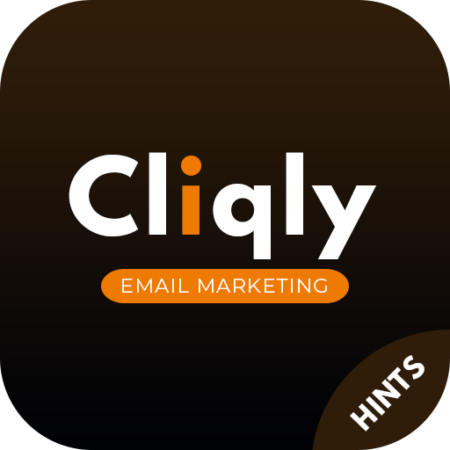Logo variations are a great way to make sure that your brand is as adaptable, consistent, and recognizable as possible.
Your logo is only one element of your branding—and it should have many forms. That’s where logo variations come in. A logo variation is an alternative version of your primary logo design. It allows you to be consistent and recognizable in many settings, making you adaptable to changing demands from your clients or customers.
Because the variation is intended for use on packaging, signage, business cards, and other items that will be seen by the general public, it should have the same color scheme and style as your main logo but with subtle differences. For example: if you have three logos in total (one for each color), then each of those logos should also be available in several different shades (such as white), which can be used to differentiate one from another visually while maintaining unity across all logos.
You need to create only one logo for all of your branding materials. Designviva helps you do this with our customized approach to logo design. As you develop a brand, it is important to have flexibility in your logo. Not only will this help your company grow and adapt, but you will also be able to create several logos that each represent a different aspect of your business.
Logo variations can help your brand stand out, but some companies will need more than others. It depends on the style of your logo and the genre of business in which you operate. We’ll discuss four key types of logo variations—primary, stacked or secondary, sub mark and favicon—to help you choose which ones to use.
Primary logo
Logo development begins with the creation of your primary logo. This is the most complete, complex design you’ll use most often.
If you’re looking for a logo that will make an impact on people, and show them your brand in the most powerful way possible, you need to look no further than the primary logo.
The primary logo is your brand’s front-and-center representation of who you are as a business, and it’s designed to be seen by everyone. It should include all of the most important information about your company: a tagline, date of establishment, and name. The more detailed it is, the better it will communicate your brand’s message.
This is where we come in! We know how important it is for businesses to communicate their message with clarity and strength—and we want to help you do just that. That’s why we offer our clients several different options when they decide what type of logo they want to use as their primary representation of their brand identity.
From bold signage to corporate T-shirts, we’ll work with you to create something that will be a surefire hit with customers and investors alike!
Primary logos are typically horizontal, but this can vary depending on the design and theme. If your primary logo contains color, it is a good idea to have a black-and-white version on hand as well.
Primary logos are generally used for larger projects or brands, so you may have more than one of them. This can make it seem like a lot of work to update every single one of them when you change something—but it’s not!
The most common way to update your primary logo is by simply changing its color scheme. For example, if you want to change from red to green or blue, just go in and change the colors in one file and save it as a new file name.
Make sure your primary logo is large and bold enough to be easily seen on both websites and printed materials. Your primary logo should be memorable and adaptable, so it will look good in both places.
Most brands use a single primary logo, but Adidas is an exception. The brand has three primary logos, each with its own style and color scheme, which are used interchangeably depending on the collection. They maintain brand recognition by using the same font and three stripes throughout their logos. Most brands use a primary logo that has several variations, like a secondary logo or submark. These can be used together or separately to represent the company’s identity.
Secondary logo
Once you’ve developed a primary logo, it’s time to create a secondary logo that is different from the first. The main goal of a secondary logo is to create a visual link between the two. For example, if your primary logo is horizontal with a symbol adjacent to words, the secondary logo can be stacked with a symbol above or below the words.
You can use these simple guidelines as a starting point when creating your second logo:
- Ensure that your secondary logo is clearly recognizable as belonging to your company.
- Use variations in color and style to differentiate the two logos from each other and make them more distinguishable.
- Use small changes in design elements such as font or spacing to make sure that both logos are distinctive and easily recognizable by customers.
The secondary logo should reflect the primary logo’s style and aesthetic. It should be in the same font, weight, and shape to maintain brand consistency. When working with limited space or a small area for your primary logo, a secondary logo can be useful as an additional visual element or reminder to keep you on track with your brand identity. Our logo design company will create a secondary logo for you to maintain brand consistency.
The most important aspect of logo design is that it looks good across multiple platforms. A primary logo might look great on a business card, but it might not look so good on a website or social media profile image.
Your secondary logo is there to support your primary logo and fill in the gaps where your primary logo can’t fit or doesn’t look the best. For example, a horizontal logo might be better suited for a letterhead template or business card, while a vertically stacked image might be better suited for your social media profile image.
Submark
Your logo is the face of your business. It’s what people see first, and it’s what they remember. But your logo is also an important part of a larger brand identity, and that means it can’t be too complicated or confusing. That’s where submarks come in.
A submark is a simplified version of your primary or secondary logo, designed for use in small spaces—like on letterhead or business cards—or when you need to scale down the size of your logo for digital purposes. Submarks are often used as part of a set with other elements like typography and color palettes, so be sure to consider how your submark will work with those elements when designing it.
For the most part, you can think of a submark as a secondary logo that accompanies your primary logo, but it’s important to note that it doesn’t have to be used in that way. Submarks are less common than logos or wordmarks. They consist of a design element that is subordinate to the main mark and adds meaning to it. Submarks usually appear within a logo itself, but they can also be separate from it, as with a symbol.
If you have multiple lines of business or products with different target audiences (for example: if you sell both cosmetics and electronics), then using separate logos for each line might be more effective than trying to fit everything into one logo. When using separate logos, it’s also important to make sure they all convey the same message—in other words, they need to look like they belong together without being exactly identical.
One thing to keep in mind is that if your primary logo is very large in size, then adding another large element next to it could overwhelm viewers instead of helping them understand more information about what company they’re looking at.
In print and digital spaces, submarks are a great way to make your logo stand out. Submarks can be used as footers or watermarks in print, or they can be used as social media avatars or applied to other parts of your branding where you want a more refined look.As your digital marketing agency, DesignViva will use submarks to polish up and refine other parts of your branding.
Favicon
Finally, creating a favicon is an important step in creating logo variations. A favicon is a tiny icon that appears at the top of a web page. It can be just a symbol, but it often contains a few letters as well.
A favicon is an important part of developing logo variations. You can use it to experiment with different fonts or colors or to try out new ideas for your brand image. The favicon is an easy way to see how a new logo will look in action without having to create a whole website from scratch!
Favicons are icons or logos used to identify a website. They can be seen in the browser’s address bar. A favicon acts like a business card for your site and improves customer loyalty by helping users easily locate your site.
Favicons are the little icons that appear in your browser’s tabs when you have a site open. They’re little reminders of your brand, and they can also help your customers find their way back to your website.
Favicons help you boost brand awareness and identity, and they make it easy for visitors to find their way back to where they left off on a site. When you use a favicon, people will remember your company when they’re looking for what you offer on their phone or tablet (or desktop).
A favicon is a little icon that appears in the address bar of your browser and when you share a web page on social media. It’s usually a tiny image, and it can be anything—a logo, a photo, or even an abstract design. The point of a favicon is to help users recognize your brand and differentiate between other sites.
DesignViva recommends smart use of a favicon, as it can be helpful to utilize one because it can also serve as an app icon. Consider the many apps on your phone, and how some icons stand out more than others. A well-designed icon will make a positive impression on your brand.
Experiment with variations of your logo.
The logo is the central element of a brand; it should be memorable and adaptable. A logo comprises multiple variations, including a primary logo, secondary logo, submark, and favicon. For help in creating a unified brand experience, professional design services are available.







